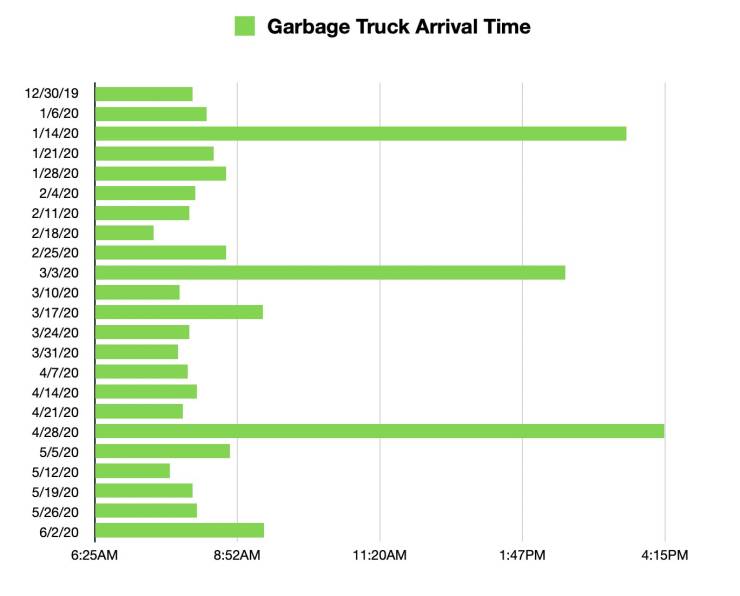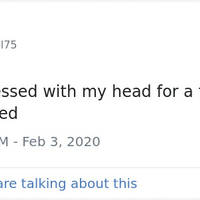"I’ve been recording what time the garbage truck picks up my trash using my doorbell camera. It seems roughly every 2 months, they have a “training truck” that comes by much later in the day. Probably a rookie driver is learning how to use the robot arm…"

6.

Cass 5 year s ago
Manny,
the color codes group 2 or 3 properties together and are the same used on the game board. According to all the rule sets I have played, other players have to pay double the rent if you own all of the properties in one group, e.g. all red properties. (Thus, in relation to the game's title, creating a "monopoly" allowing you to jack up the rent price.)
The statistical distribution of properties (i.e. the width/height of the colored boxes) differs from simple throws with 6-sided dice, because all players start in the bottom right corner and there are several cards that send you to specific locations (for example, "jail" on the bottom left is a very common occurence).
Therefore, the properties in the orange and red group have a significantly higher percentage to be landed on by another player after they got to jail. Conversely, the properties in the brown group are landed with a very low chance (players coming from jail never pass them, players staring in the bottom right rarely throw low dice numbers).
A good strategy for winning monopoly is focusing on the orange and red properties, then the purple and yellow properties. If a player manages to obtain a monopoly in these groups by buying or bartering, it is very hard for the other players to beat the statistical attrition.
the color codes group 2 or 3 properties together and are the same used on the game board. According to all the rule sets I have played, other players have to pay double the rent if you own all of the properties in one group, e.g. all red properties. (Thus, in relation to the game's title, creating a "monopoly" allowing you to jack up the rent price.)
The statistical distribution of properties (i.e. the width/height of the colored boxes) differs from simple throws with 6-sided dice, because all players start in the bottom right corner and there are several cards that send you to specific locations (for example, "jail" on the bottom left is a very common occurence).
Therefore, the properties in the orange and red group have a significantly higher percentage to be landed on by another player after they got to jail. Conversely, the properties in the brown group are landed with a very low chance (players coming from jail never pass them, players staring in the bottom right rarely throw low dice numbers).
A good strategy for winning monopoly is focusing on the orange and red properties, then the purple and yellow properties. If a player manages to obtain a monopoly in these groups by buying or bartering, it is very hard for the other players to beat the statistical attrition.








yep, is for nothing without bottom axis
I assumed it's the woman's age.
the color codes group 2 or 3 properties together and are the same used on the game board. According to all the rule sets I have played, other players have to pay double the rent if you own all of the properties in one group, e.g. all red properties. (Thus, in relation to the game's title, creating a "monopoly" allowing you to jack up the rent price.)
The statistical distribution of properties (i.e. the width/height of the colored boxes) differs from simple throws with 6-sided dice, because all players start in the bottom right corner and there are several cards that send you to specific locations (for example, "jail" on the bottom left is a very common occurence).
Therefore, the properties in the orange and red group have a significantly higher percentage to be landed on by another player after they got to jail. Conversely, the properties in the brown group are landed with a very low chance (players coming from jail never pass them, players staring in the bottom right rarely throw low dice numbers).
A good strategy for winning monopoly is focusing on the orange and red properties, then the purple and yellow properties. If a player manages to obtain a monopoly in these groups by buying or bartering, it is very hard for the other players to beat the statistical attrition.